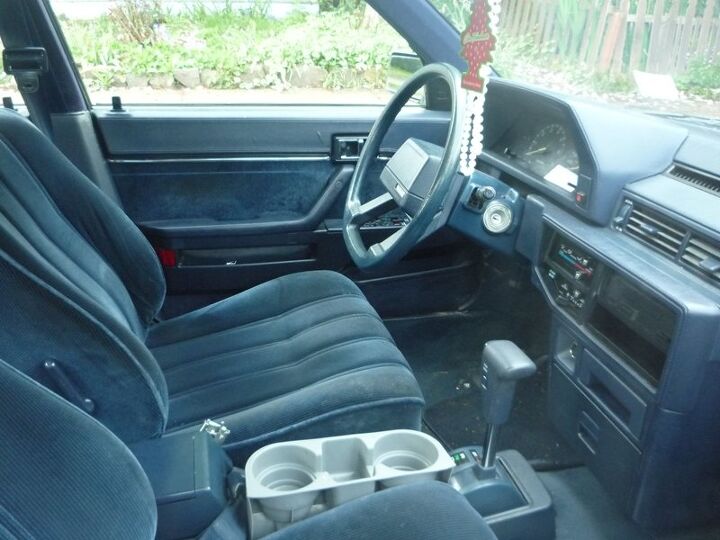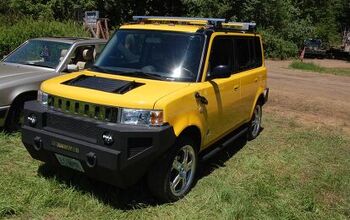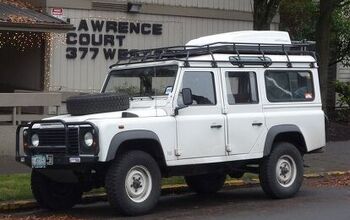Curbside Classic: 1986 Toyota Camry

So just how exactly does one become the best selling car in America? The only reliable way one becomes number one in just about anything: doing your homework and practicing every day. And it really does helps if the competition has forgotten that formula.
Read old reviews about the first generation Camry, and the exact qualities that I felt and described in my recent review are all there, right down the list except for one (roomy): “quiet, smooth, solid, competent but not exciting handling, comfortable, well built, reliable, plenty of torque and power but not sporty”. Same car, twenty seven years ago; just add some super-sizing and drop the hatch, and the formula is as intact (and winning) as ever.
My first exposure to the Camry was in 1984, when the Chief Engineer of the tv station and I took a business trip together, and he talked me into renting a Camry. Having long learned to trust his judgment, we made sure one was available and reserved. Good call too, as the default rentals of the day would typically have been a floppy Buick Regal, Ford Tempo, or K car. The Camry’s obvious solidity and quiet manners despite it being a compact was immediately apparent, although it lacked the tip in and roarty zest of GM’s V6s, and of course the torque steer that came with it.
Who knows exactly, but I’ll guess that there were two cars under Toyota’s microscope when they designed the completely all-new 1983 Camry, a major departure from the long family of RWD cars (except the tiny Tercel): the Honda Accord of course, but also the Chevrolet Citation. Clearly, the Accord showed the way forward with FWD in the popular sized class. But I’m guessing that Toyota, like most of the imports, was more than a bit worried about GM’s highly ambitious X-cars (which we’ll take a look at soon).
The Citation had all the right ingredients: modern, space-efficient bodies, including five-door hatches that I’m thinking may well have influenced the design of the boxy gen1 Camry. But as we all know all too well, they were a flash in the pan that quickly sizzled out due to their lack of proper full development and a rash of quality issues. The X-Bodies’ flame-out, and the mediocre GM mid-sized cars of the times threw the gates to the now biggest sector of the market wide wide open, and the Camry glided in, in stealth mode at first.
Because before the Camry could live up to its name and take the crown (which is what “Camry” means as an Anglicized phonetic transcription of the word Japanese word kanmuri), it had to sit out the Taurus and Accord years at the top. But who’s in a hurry, when you’re thinking longer than average. The Camry truly is the tortoise. How it outran GM’s X-Bodies and even the Taurus is easier to understand than its ability to knock the Accord off the throne. But it did, in its silent but deadly way.
What’s somewhat remarkable is that the Current Camry is only the third truly all-new Camry since this one. The popular and quite successfully restyled gen2 (CC here) sat on the same platform as its boxy predecessor, which made itself felt by the relative compact interior. The all-new and definitive gen3 Camry set the brutally high standard that wiped out the competition once and for all; its remarkably refined manners truly made it the Lexus of its competition, and was what most distinguished it from the decidedly tauter and sportier Accord of the time. The gen4 was a rationalization of the gen3, as Toyota found ways to cut costs like the expensive double seals on the doors. Hardly anyone noticed, especially since prices now became more directly competitive against Detroit’s ever-more pressured competitors. The Camry’s march downwards in price forced GM to fight ever more on price, and cut corners and content in the process, but it was a losing battle.
The differences in the gen5 and 6 are more subtle than ever. As I looked out my parent’s front window at my new rental and my brother’s ’05, it was all-too obvious that they share a lot of hard points. Let’s just call it a reskin. The profits that Toyota has made with three distinct generations of Camrys over 27 years have undoubtedly been remarkable. It wasn’t that long ago that some well leaked info suggested that Toyota was making 90% of its global profits in the USA. The Camry is the gold crown, regardless of the language or the spelling. And Toyota’s going to be mighty reluctant to see anyone else wearing it.

More by Paul Niedermeyer
Latest Car Reviews
Read moreLatest Product Reviews
Read moreRecent Comments
- Arthur Dailey The longest we have ever kept a car was 13 years for a Kia Rondo. Only ever had to perform routine 'wear and tear' maintenance. Brake jobs, tire replacements, fluids replacements (per mfg specs), battery replacement, etc. All in all it was an entirely positive ownership experience. The worst ownership experiences from oldest to newest were Ford, Chrysler and Hyundai.Neutral regarding GM, Honda, Nissan (two good, one not so good) and VW (3 good and 1 terrible). Experiences with other manufacturers were all too short to objectively comment on.
- MaintenanceCosts Two-speed transfer case and lockable differentials are essential for getting over the curb in Beverly Hills to park on the sidewalk.
- MaintenanceCosts I don't think any other OEM is dumb enough to market the system as "Full Self-Driving," and if it's presented as a competitor to SuperCruise or the like it's OK.
- Oberkanone Tesla license their skateboard platforms to other manufacturers. Great. Better yet, Tesla manufacture and sell the platforms and auto manufacturers manufacture the body and interiors. Fantastic.
- ToolGuy As of right now, Tesla is convinced that their old approach to FSD doesn't work, and that their new approach to FSD will work. I ain't saying I agree or disagree, just telling you where they are.






































Comments
Join the conversation
Also owned an 86 to replace the horrendous 80 Xcar Buick I finally had to give up on, one of my biggest regrets in life was NOT replacing the engine on my 86 Camry and instead getting a 98 Corolla, inferior in every way.
An ex-gf of mine had one of these. Maybe she still has it, for all I know. She loved it, though I didn't really get it at the time. It was used when she got it, and I was blind to its charms. She wouldn't hear a bad or ever indifferent word spoken about it though, and she was deeply offended when a neighbor of mine mistook it for my similarly silver and boxy Audi 4000CS quattro. Her Camry replaced a Cherokee and a string of Saab 900s, all of which were purchased new and stranded her with total regularity. The realization of a car that always completed round trips was such a novelty that she still had it when we met up seven years later.